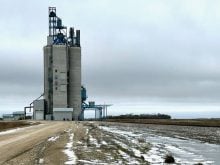Highway 219 snakes through central Saskatchewan. The bumpy journey offers few shoulders for travelers dodging the pockmarked trail south of Saskatoon that passes a heavily treed First Nations reserve, lush irrigated farms and sandy beaches.
The road is well travelled by Russ McPherson of Outlook, a tidy town of 2,400 adjacent to the South Saskatchewan River.
The business manager for Mid-Sask Community Futures has a dream that will shift the region’s focus to the opportunities of the river and take it well beyond its agricultural roots through the WaterWolf project.
Read Also

Farming Smarter to hold Agronomy Battles series
Southern Alberta non-profit research institute hope grassroots sessions with producers help focus future research on cover crops, strip tillage and herbicide resistance
Central Saskatchewan has lived with its back to the river for a long time, but that’s about to change, he said.
McPherson, who also manages WaterWolf, said his group is working with several partners, including the Whitecap First Nation, which is developing a championship golf course and casino resort, to create a tourism corridor between Saskatoon and Lake Diefenbaker, the reservoir created by the Gardiner Dam.
Promoters hope that the corridor, coupled with initiatives such as irrigation expansion, improved services and tax sharing, will ignite the economy of the region, now hurting from a weak agricultural sector.
Central to their plan is upgrading Highway 219 and continuing to divert heavy haul traffic to larger thoroughfares.
“Board members with WaterWolf see the project as a vital step toward economic development by capitalizing on our unique landscape,” McPherson said.
Local and regional organizations joined with Saskatchewan Highways to produce a four year plan that would see the highway widened and resurfaced and restricted for use by commuter and recreational traffic.
McPherson hopes that opens the potential for economic development, particularly non-agricultural, across the region.
He will spend two years working on the project on behalf of the Mid-Sask Regional Economic Development Authority and Community Futures Development Corp.
WaterWolf was established because there was no structure for addressing regional development issues, no consensus for planning infrastructure and development and no regional table to encourage and facilitate initiatives, he said.
Local REDA board members are also municipal councillors, so networks are already in place to distribute information to communities and bring ideas back to the table, he added.
He hopes geographic information systems will also help with regional planning.
Other WaterWolf plans include seeking ways to enhance people’s enjoyment of the often overlooked Danielson Provincial Park on the north end of the lake, examining and planning water use in the area, creating a river valley planning authority and exploring tax and infrastructure agreements to accelerate opportunities.
They would like to create infrastructure for a high end residential development along the river valley south from Saskatoon.
McPherson also wants to provide up-to-the-minute reports that would include information on when roads were gravelled or cleared and provide useful information for emergency response teams.
“We want to create a safe healthy environment that we can encourage people to come into,” he said.
On the agricultural front, a recent report done for the Westside Irrigation Project found there is water available from Lake Diefenbaker to irrigate 370,000 acres.
That project seeks to diversify the agricultural economy now centred on livestock, fruit and vegetable production to include biodiesel and ethanol industries.
But while agriculture is a staple in the area, McPherson believes the region’s economic health requires diversification.
“We need to get a balance between agriculture and non-agricultural,” he said.
McPherson cited new businesses in Outlook as bright spots on the horizon.
They include I-Tracks, which will require computer savvy workers to do on-line focus groups, surveys and data collection, and Iron Solutions, which provides on-line services for farm machinery buyers and sellers.
“That’s where things are moving,” he said. “Information based businesses will attract the kids back.”
Such business adds to the tax base and supports the infrastructure upgrades that are needed to draw more to the community.
Donna Mitchell, executive director of Agriculture Canada’s Rural and Co-operatives Secretariats, praised the WaterWolf project’s “bottom up” approach in creating a “regional service delivery model” for central Saskatchewan.
“Local decision making is key to enabling communities to determine their own future,” she told delegates at the recent Pan Canadian Community Futures conference in Whistler, B.C.
Mitchell stressed her department’s role in helping resource-based communities be resilient and move forward while examining under-used assets and ways to mobilize rural Canada.
She advised communities to look past sectoral subsidies that are not sustainable and have failed to stabilize floundering communities. Instead, she advised looking for ways to capture opportunities to renew and rebuild the economic base.
Mitchell maintains there is still a place for government, particularly in compiling good information to better characterize what is happening and in creating databases documenting innovative approaches in community development.
“Now we just have anecdotes of that,” she said.
Such data and analysis are needed to help governments more effectively provide what is needed in rural Canada.
“The data from community models will be invaluable for us in making a case with the federal and provincial governments and policy makers,” she said.














